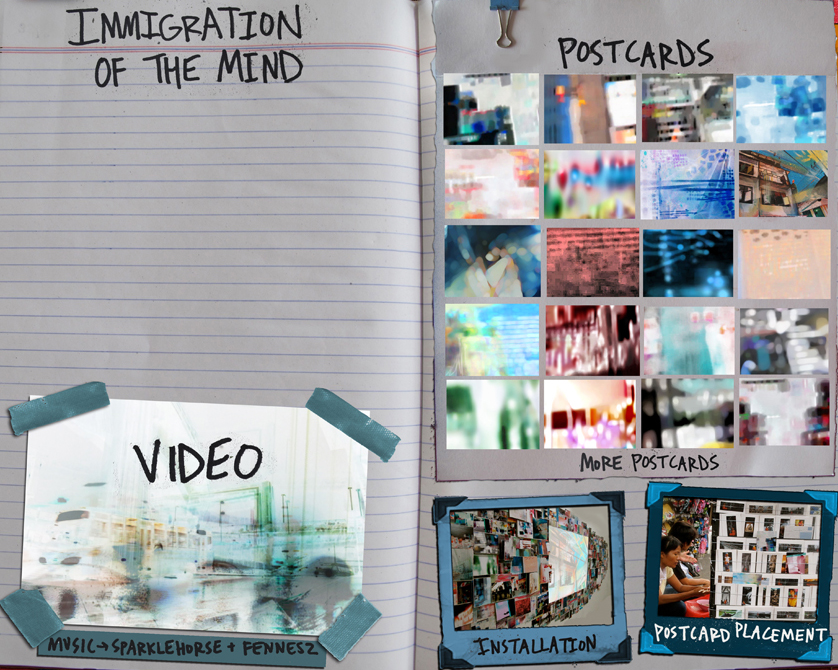
- It is possible to immigrate outside of space and time. We do it all the time when we draw conclusions, change our minds, jump from one thought to the next, remember and rethink things already thought.
- The difference between immigration of the mind and immigration within space and time is that when we immigrate in space and time we typically have some idea of where we are going, what is our desired final destination, or at least some idea of the general direction in which we are headed.
- In immigration of the mind, however, we are constantly surprising ourselves. We cannot anticipate our next destination thought before it is thought because as soon as we anticipate where we are going we have already arrived.
- These two forms of immigration do however have similarities. The term immigration itself implies something more than movement in both conditions. It implies moving from point A to point B, but not without carrying some things with you along the way and concurrently leaving some things behind. When we recall a memory or conception previously thought, it cannot evade its secondhand condition. The new light shed upon it by experiences and thoughts we have had between the time of its previous and current perception are continually reshaping it into something new, as if we are seeing it, thinking it, for the first time every time; comparable to immigration through space and time when we return to a familiar place only to find that while we were away everything has changed.
- Furthermore, immigration in space time and immigration of the mind, as disconnected as they may sometimes seem, do have a connecting link holding them in a parallel orientation. What you see and do can provoke what you think and imagine; what you think and imagine can, in a likewise fashion, elicit what you see and do.
- One popular way that we choose to record immigration in space and time is by purchasing postcards which document the places we have been and seen. Postcards serve as a map of immigration in space and time. This work, Immigration Of The Mind, consists of a series of postcards that strive to serve as a map of immigration of the mind. The images are of real places, actual possible destinations, but are abstracted to the point where they are not recognizable as tangible places on a map as a means of depicting our second mode of movement which is immigration of the mind. These immigration of the mind postcards were secretly placed in displays of postcards for sale at stores (like 7-11) selling conventional immigration space time postcards.